1. Ulysses
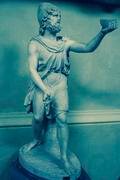
Legend has it that Lisbon was founded by the greek hero Ulysses, who named it Olisipo.
Situated at the estuary of the Tejo (Tagus) river and built on seven hills, Lisbon’s importance was recognised by Julius Cesar who elevated its administrative status to that of roman municipality and added Felicitas Julia to its name.
The arabs, who took the city in 714, called it al-Lixbûnâ.
2. Lettuces

The inhabitants of Lisbon are called the lisboetas but they are popularly known as alfacinhas, which literally means small lettuces. That seems to have been the only food available to the inhabitants during one of the many sieges the city suffered throughout its history.
A true alfacinha is not simply one who was born or resides in Lisbon, he has quite a particular attitude and view of the world. Elusive to define or even to describe, that weltanschauung manifests itself in several ways, such as the aphorism “Portugal is Lisbon, the rest is landscape”.
3. Capital
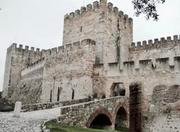
The first king of Portugal was Afonso Henriques, known as The Conqueror. A colossus of a man with a temper, he started his career by thrashing his mother and her lover at the battle of S.Mamede. His idea of fun was to roam about the land carrying a hefty sword and kicking ass. He reigned for 57 years, the longest-reigning ruler of Portugal, having left very few asses unkicked.
According to popular lore in 1147 Afonso Henriques put siege to moor-occupied Lisbon. The moors barricaded themselves in the heavily fortified castle overlooking the town and there was no easy way to dislodge them. It was then that the gallant Martin Moniz spotted an open portal in the castle. Wasting no time he went on a suicidal one-man charge, using his body to prevent the moors from closing the door. His sacrifice gave enough time for Afonso Henriques and his sword to arrive, some more ass-kicking ensued, out went the moors, and on went Lisbon to became the capital of the kingdom of Portugal in 1255.
4. The Silk Road
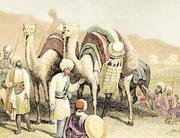
At the end of the XV century, a most extraordinary person became king of Portugal. Joāo II, aka_ O Príncipe Perfeito_ (the perfect prince), apparently possessed that most rare of qualities in a sovereign: a fully-functioning brain. He took a lot of power away from the corrupt nobility who at first tried to react by conspiring to kill him. They soon learned they were facing a determined man, a hands-on manager who did not hesitate to personally kill his opponents. After dispatching a few of his more dangerous foes, the others quietly came around to his way of thinking. He proceeded to develop a strategic vision for the country, invested heavily in science, technology, and education, and opened the doors to all foreigners who had the know-how needed to propel what came to be known as the Portuguese discoveries. He was the very first true globalist (albeit with no known ties to Soros or even the Rothschilds ) but unfortunately died very young aged only 40 years under suspicious circumstances.
Nevertheless, at least for a few decades, his vision materialized. In 1497 a bearded bloke called Vasco da Gama sailed from Lisbon at the head of the Portuguese armada. He established the maritime route connecting Europe to Asia thus effectively closing down the silk road v1.0.
5. The Catalonian connection
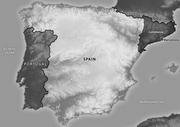
For sixty years between 1580 and 1640, and as a result of a marriage arrangement, Portugal was ruled by the House of Habsburg. During that period three kings of Spain, all named Philip, were simultaneously kings of Portugal. While the first two were rather benign rulers the third Philip had a nasty tendency to get into wars and to raise taxes to finance them. In 1640 Catalonia revolted
and Philip turned to Portugal for money and men to crush the sedition. The demand received a less than lukewarm reception, and an alliance of wealthy Lisbon merchants and lower rank noblemen finally managed to convince a much pampered and very reluctant Duque of Bragança to nominally head a movement against Philip to restore Portugal’s independence. Instrumental for his decision was his wife’s famous unselfish
and patriotic utterance that “It’s better to be queen for a day than duchess for life”. In any case dealing with two simultaneous insurrections proved to be too much for Philip who eventually had to let go of Portugal.
6. The Inquisition
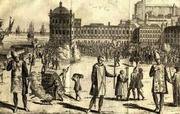
Although it never reached the Spanish Tomás de Torquemada’s league, during the XVII and XVIII centuries (in fact up to 1821), the Portuguese Holy Office of the Inquisition was the main provider of public entertainment in Lisbon. The city apparently had an endless supply of sinister sinners whose only possible redemption was purification by fire. Accordingly, huge bonfires were lit in large public places such as Rossio and Praça do Comércio. The cheering populace was numerous and merry, the king a regular attendant. As for converted jews and muslims and anyone else accused of having unchristian thoughts they were, well, toast.
7. The Great Earthquake

On the 1st of November of 1755 one of the strongest and deadliest earthquakes ever recorded in the world’s history levelled most of Lisbon. It was followed by a formidable tsunami, a 20-meter high giant wave pounding what was left of the city. Survivors took refuge mostly in churches where they lit candles and prayed for forgiveness and mercy. Heavenly intervention came promptly in the form of dozens of fires spreading all around town, candles and wooden buildings being not that a good match.
One of the few houses left standing in the wake of the tragedy was that of the prime-minister Sebastião José de Carvalho e Melo, Marquis of Pombal. His prestige and power enormously enhanced by this obvious manifestation of divine favor, he went on to “bury the dead and take care of the living”. Lisbon was rebuilt from scratch, and downtown become known as Baixa Pombalina in his honor. He is the guy depicted with a lion in the statue at center of the roundabout in front of HF hotel where Steamfest 2 takes place.
8. The Regicide
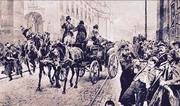
On the evening of February 1st, 1908 king Carlos I, wearing his Generalíssimo uniform, arrived by boat at _Praça do Comércio _ where he hoped on an open carriage together with his wife Amélia and prince Luís Filipe, the heir to the trone. As the carriage progressed through the square a bearded man calmly pulls out a carbine from under his coat, kneels and takes aim at the king. Hit on the neck, he suffers an instant death. Several other men open fire on the carriage, one of them puts his foot on the stirrup from where he shoots prince Luís Filipe who still manages to shoot back. At that moment the carbine man strikes again, killing the prince with a shot to the head. As the carriage flees a third shooter hits Manuel, the youngest son of the king and now heir to the trone, but inflicts only a superficial wound. The first two shooters are immobilised and slaughtered on the spot by overzealous policemen. They are identified as members of the secret society Carbonária, with ties to the Masonry. The investigation of the regicide takes two years. The final report is delivered to Afonso Costa, the minister of Justice of the newly installed Provisional Government of the Republic, and a known free mason. It is never to be seen again, let alone acted upon. The only known copy of the report finds his way to London where it is delivered to the exiled king Manuel II. It disappears forever following a break-in of his residence.
9. Play it again Sam

At the outbreak of the Second World War Portugal was ruled by a very mild form of fascism. Albeit a nationalist authoritarian, and as such viewed as leaning towards the Axis powers, strongman António de Oliveira Salazar, an austere and distinguished academic with a falsetto voice, would rather die than be caught delivering a speech rolling his eyes or thumping on his chest, and he did not care for Hitler’s racial policies. Also, Portugal and the United Kingdom had, and still have, the longest standing diplomatic alliance in the world, dating back to 1373. The cunning Salazar thus assumed a tricky but highly profitable neutrality stance, trading actively with both blocks. The former finance professor did insist on one condition, though: sales were to be made against the delivery of physical gold only, no checks, no bonds, and certainly no Reichmarks, thank you very much.
Against this backdrop of neutrality Lisbon became a beehive of spies as well as the last stop for those hoping to reach America in their flight from the national-socialists. It is to Lisbon that in the 1942 film Casablanca, Czech Resistance leader Victor Laszlo and his wife Ingrid Bergman are trying to escape.
10. Waiting for applause

After visiting the statue of Christ the Redeemer in Rio de Janeiro the dynamic Cardinal Cerejeira, head of the Portuguese catholic church and an old pal of Salazar, set his mind on building a similar monument in Lisbon. The idea came to fruition after the war and the Sanctuary of Christ the King opened its doors in 1959 in Almada, on the southern shore of the Tejo river. The giant statue offers unique stunning views of Lisbon and the river.
A few years later, in 1966, a suspension bridge connecting Lisbon to Almada was inaugurated. Built by the United States Steel Export Company (NYSE: ticker X, but this should not be construed as investment advice), it has an eerily resemblance to San Francisco’s Golden Gate bridge. First named Ponte Salazar, it was renamed Ponte 25 de Abril after the 1974 Carnation Revolution. One thing that did not change is it being a toll bridge. However, alfacinhas have long believed crossing the bridge will become free the day the nearby statue of Christ clasps his hands.
Congratulations @daikoku! You have completed some achievement on Steemit and have been rewarded with new badge(s) :
Click on any badge to view your own Board of Honor on SteemitBoard.
For more information about SteemitBoard, click here
If you no longer want to receive notifications, reply to this comment with the word
STOPCongratulations @daikoku! You have completed some achievement on Steemit and have been rewarded with new badge(s) :
Click on any badge to view your own Board of Honor on SteemitBoard.
For more information about SteemitBoard, click here
If you no longer want to receive notifications, reply to this comment with the word
STOP